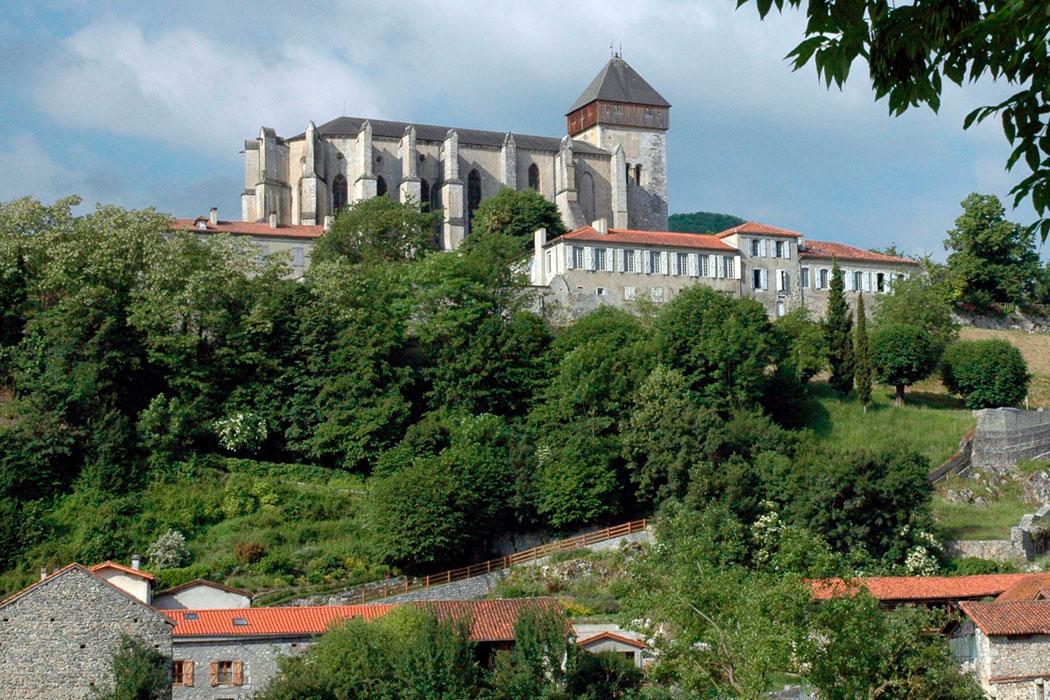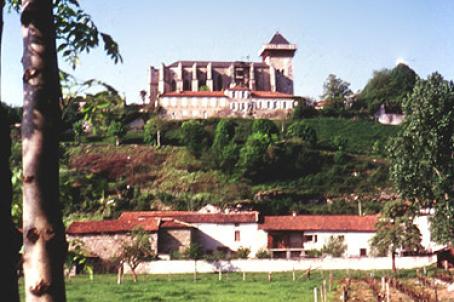Cathedral of Saint-Bertrand-de-Comminges

The former Catedral de Saint-Bertrand-de-Comminges is a building of architectural importance built in the 12th century and modified in the 14th and 16th centuries.

The former Catedral de Saint-Bertrand-de-Comminges is a building of architectural importance built in the 12th century and modified in the 14th and 16th centuries.

Notre-Dame de Saint-Bertrand-de-Comminges Cathedral was the cathedral of the diocese of Comminges until 1801, when Pope Pius VII issued the bull Qui Christi Domini dividing the territory of the diocese of Comminges between the archdiocese of Toulouse and the diocese of Bayonne. The cathedral is located on the acropolis of a Celtic oppidum which gave birth to the Roman city of Lugdunum Convenarum, whose ruins stretch across the plain. The invasion of the Vandals in 409 devastated it. The city disappeared in 585 following a conflict between Gondovald, claiming to be the natural son of Clotaire I and King Gontran. It was not until Bertrand de l'Isle, a member of a noble family and canon of Toulouse, appointed bishop of Comminges in 10832, that the city recovered. He re-established community life in the chapter, raised the cathedral and built its cloister. He died in 1123. Recognised as a saint by the crowd of pilgrims at the tomb of Saint Bertrand, he was only recognised as a saint under the pontificate of Clement V. The influx of pilgrims necessitated the enlargement of the cathedral in the second half of the 18th century. The bell tower was built in the 12th century inside the nave.

Notre-Dame de Saint-Bertrand-de-Comminges Cathedral was the cathedral of the diocese of Comminges until 1801, when Pope Pius VII issued the bull Qui Christi Domini dividing the territory of the diocese of Comminges between the archdiocese of Toulouse and the diocese of Bayonne. The cathedral is located on the acropolis of a Celtic oppidum which gave birth to the Roman city of Lugdunum Convenarum, whose ruins stretch across the plain. The invasion of the Vandals in 409 devastated it. The city disappeared in 585 following a conflict between Gondovald, claiming to be the natural son of Clotaire I and King Gontran. It was not until Bertrand de l'Isle, a member of a noble family and canon of Toulouse, appointed bishop of Comminges in 10832, that the city recovered. He re-established community life in the chapter, raised the cathedral and built its cloister. He died in 1123. Recognised as a saint by the crowd of pilgrims at the tomb of Saint Bertrand, he was only recognised as a saint under the pontificate of Clement V. The influx of pilgrims necessitated the enlargement of the cathedral in the second half of the 18th century. The bell tower was built in the 12th century inside the nave.

The church of Saint-Aventin is a Romanesque church dating from the end of the 11th and 12th centuries. It is composed of a nave with a semi-dome vaulted apse and two side aisles each with an apse. The open belfry with semicircular bays dates from the 11th century. The main interest of this small mountain church lies in its lapidary heritage, in particular its portal whose tympanum is decorated with a Christ in Majesty whose mandorla is supported by four angels each bearing a symbol of the four evangelists.